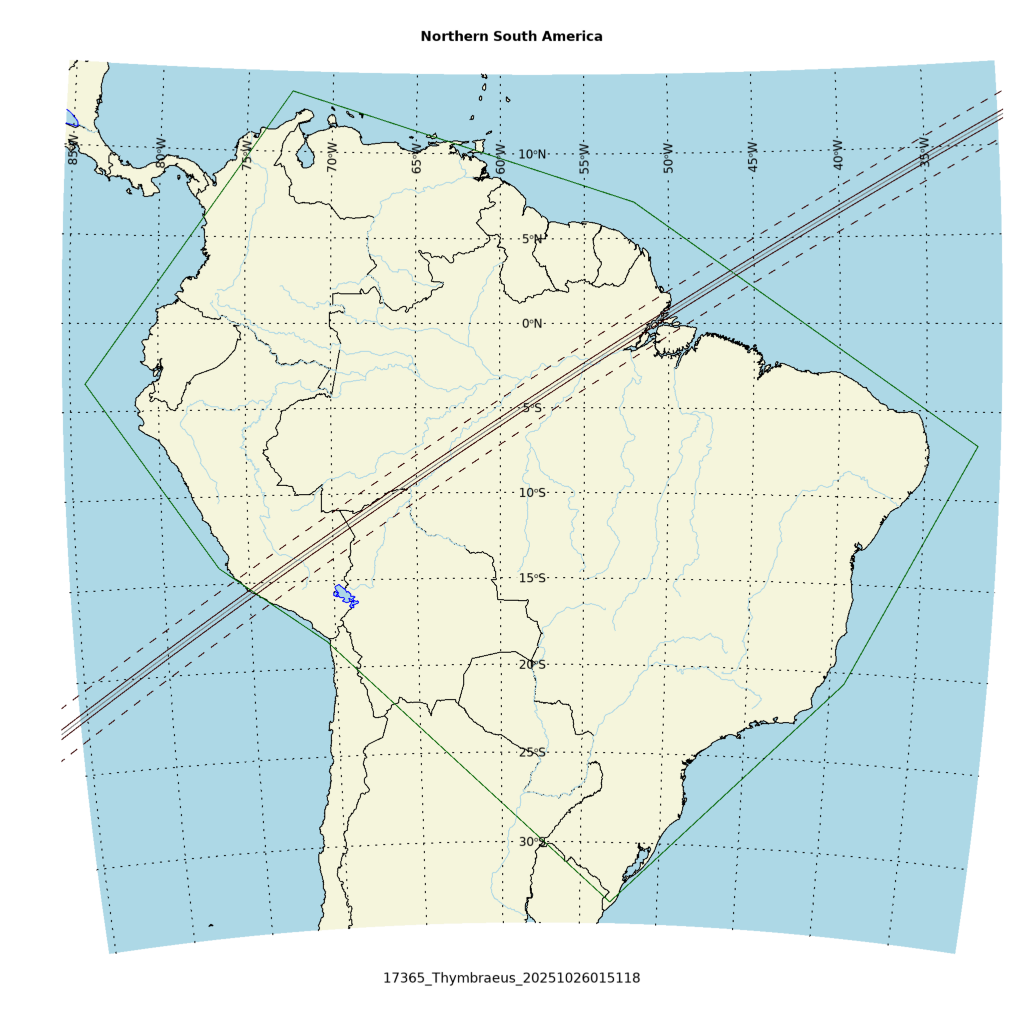
Occultation event with (17365) Thymbraeus, event index number 1415
Regions able to see the event: SAmericaN
Geocentric closest approach at 2025/10/26 01:51:18 UTC
J2000 position of star is 02:24:44.0 +22:43:51
Equinox of date position of star is 02:26:12.0 +22:50:48
Star is 139 degrees from the moon. Moon is 18% illuminated.
Stellar brightness G=15.5, apparent brightess of occulting body is G=15.0
Use an exposure time of 0.65 seconds with the standard RECON-QHY system.
SNR of 5.1 per integration for unocculted signal
Expected flux drop is 40% with SNR of 2.0 for the occulted depth (per occulted point)
Apparent velocity is 16.1 km/sec on the sky relative to the star, or, 20.4 arcsec/hr.
Position angle of asteroid motion is 64.4 degrees
The recommended exposure time corresponds to 10.5 km per image.
The 1-sigma error in the time of the event is 1.4 seconds.
The 1-sigma cross-track error in the shadow position is 33.4 km.
The sky-plane scale is 2843.5 km/arcsec.
Diameter estimates:
47.2 km assuming a 5% albedo, maximum of 2.9 sec for a central chord
19.3 km assuming a 30% albedo, maximum of 1.2 sec for a central chord
Cross-track diameter of 44.9 km used for deployment plan.
Star training set for 17365_Thymbraeus, (2025/10/26 01:51UT) Object RA Dec mag sep mel Aldebaran 04:37:24.3 +16:33:33 0.8 31.44 163 Hamal 02:08:38.1 +23:35:00 2.0 4.10 135 21 Ari 02:17:11.1 +25:09:41 5.6 3.10 138 PPM 091645 02:26:07.9 +22:32:59 8.5 0.30 139 17365_Thymbrae 02:26:12.0 +22:50:48 15.0 139 Positions are for equinox of date


Star training set for 17365_Thymbraeus, (2025/10/26 01:51UT) Object RA Dec mag sep mel Aldebaran 04:35:55.4 +16:30:29 0.8 31.44 163 Hamal 02:07:10.8 +23:27:41 2.0 4.10 135 21 Ari 02:15:42.6 +25:02:33 5.6 3.10 138 PPM 091645 02:24:40.0 +22:26:02 8.5 0.30 139 17365_Thymbrae 02:24:44.0 +22:43:51 15.0 139 Positions are for J2000